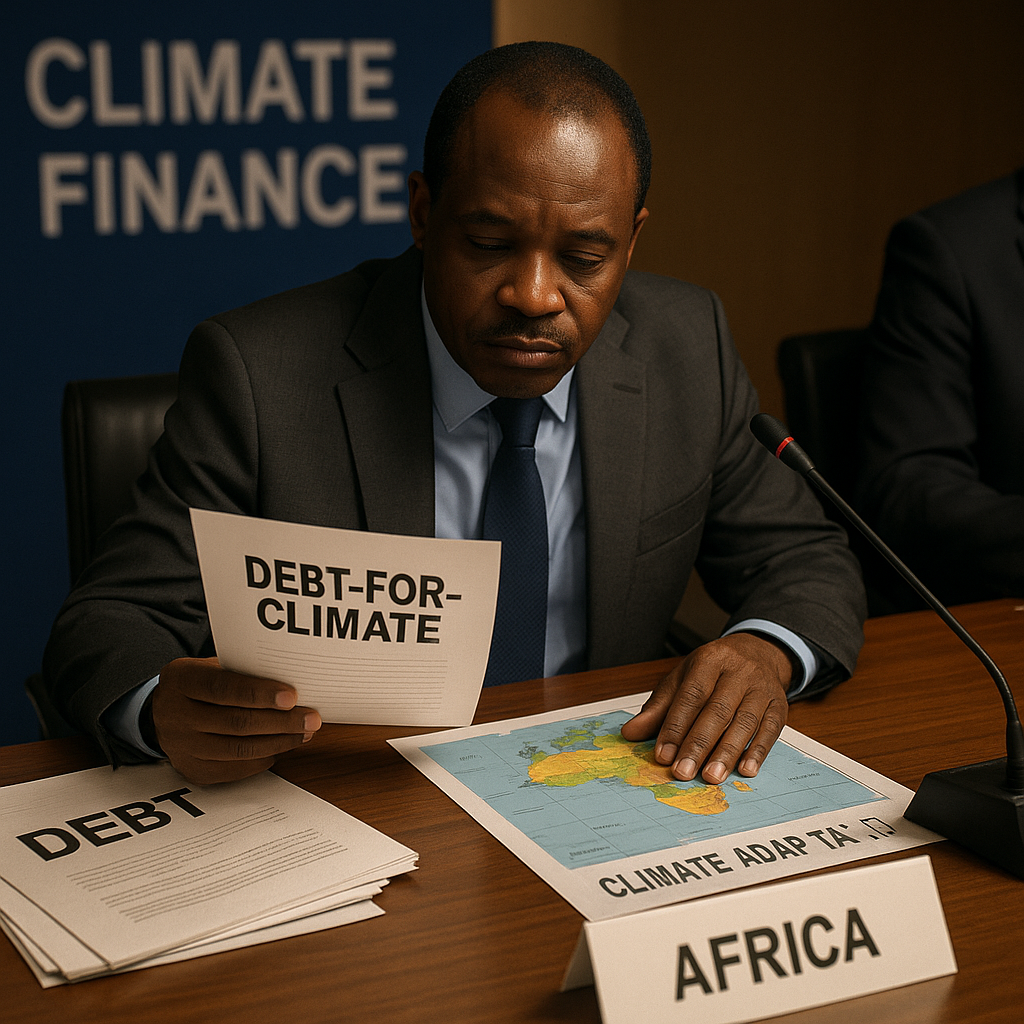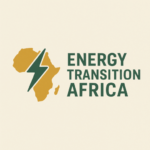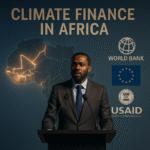Everybody frames swaps as innovation. But who controls the script, and who ends up on the cutting room floor?
Debt-for-climate swaps are enjoying a moment. Policymakers and international institutions are increasingly touting these instruments as elegant solutions to twin crises: spiralling sovereign debt and accelerating climate change. For African governments saddled with repayments and mounting climate disasters, the appeal is obvious. Convert a portion of external debt into funds for clean energy, adaptation, or nature conservation, and gain breathing room in the process.
But behind the headlines and high-level panels, a tougher question is emerging: are these swaps really shifting power and outcomes in Africa’s favour – or simply rearranging the burden?
The Pitch: Climate Relief Meets Debt Relief
At their core, debt-for-climate swaps allow a portion of a developing country’s debt to be cancelled or restructured in exchange for a commitment to spend an equivalent or agreed amount on climate-related investments. In theory, this frees up domestic budgets while advancing global climate goals.
Gabon, for example, signed a much-publicised $500 million debt swap in 2023, tied to ocean conservation and funded through blue bonds. Meanwhile, the Democratic Republic of Congo (DRC) is now in talks to develop a debt-for-climate instrument focused on forest protection and electric vehicle infrastructure (UN Economic Commission for Africa).
In Zambia, a country struggling with nearly $18 billion in external debt, policymakers have discussed leveraging debt-for-climate swaps to fund renewable energy access in rural provinces. Community groups in Eastern Province, where over 70% of households lack access to electricity, argue that climate finance should not bypass areas already grappling with inequality.
A Drop in the Ocean
One of the biggest critiques of debt-for-climate swaps is scale. Most swap deals cover only a fraction of the total debt. Gabon’s highly praised deal redirected roughly $163 million out of the $500 million total bond structure, just a sliver of its overall debt burden. Of that amount, only $4.5 million per year reportedly goes directly to conservation (AP News).
Compare that to the African Development Bank’s estimate that Africa needs $213 billion annually by 2030 to meet its Nationally Determined Contributions (NDCs). In that light, most debt swaps are rounding errors dressed in green. For deeper analysis, see our post on Africa’s Climate Finance Crisis.
Who Designs the Deals?
A growing concern is that these swaps are not designed with African leadership at the centre. Most are negotiated between creditor governments, private bondholders, or international financial institutions. African ministries are often invited late into the conversation – and civil society rarely enters the room at all.
In many cases, the swaps are structured through offshore vehicles, insured by US-backed agencies like the Development Finance Corporation (DFC), and facilitated by Western investment banks. This raises uncomfortable parallels to the colonial dynamics that first produced the debt.
As the European Centre for Development Policy Management warns, donor nations are increasingly using climate swaps to secure influence, advance trade interests, or offset their climate obligations.
Sovereignty Traded for Finance?
For civil society and African think tanks, the real worry is governance. Who decides which projects get funded, where money flows, and whether communities are meaningfully involved?
In Nigeria, the government has explored climate-linked debt restructuring in partnership with international finance actors. Yet civil society organisations in the Niger Delta have warned that any such deal must prioritise remediation, renewable livelihoods, and transparency, not simply funnel funds into government coffers without accountability.
In many current deals, climate spending is managed through externally approved mechanisms. Conditions often mirror older structural adjustment frameworks: public sector wage limits, procurement through foreign contractors, and strict monitoring by donors.
This raises the question: are these swaps enabling sovereignty or replacing one form of control with another, this time labelled “green”? See our post Climate finance for Africa: justice, not pity for related perspectives.
A Boon for Bondholders?
There’s also the profit dimension. While African countries are told they’re securing fiscal relief, many swap structures benefit commercial creditors first. In the Gabon deal, for instance, investors received a premium interest rate, legal protections, and US political risk insurance. Financial media described the bond as “de-risked, high-yield, and impact-aligned” – a near-perfect combination for Western investors.
In Sierra Leone, discussions around debt-for-climate swaps have sparked debate among civil society groups, particularly around whether such instruments will genuinely benefit communities affected by deforestation and flooding in districts like Bo and Kenema.
In this light, swaps risk being not climate solutions, but greenwashed finance plays. For more on global gatekeepers of finance, see our post Who’s Funding Africa’s Transition?.
The Missing Civil Society Voice
For organisations working on the frontlines of Africa’s climate crisis, there’s little room in these deals to engage. Community groups, women’s cooperatives, and local innovators, those who understand climate impact most intimately, are not included in negotiations, implementation, or monitoring.
In Malawi, local farmers’ associations argue that despite the country’s eligibility for debt swaps, none of the proposed projects directly address the worsening droughts destroying crops and livelihoods. They feel left out of a process that ultimately affects their futures.
The result? Funds may be redirected to conservation zones or energy projects, but with no community ownership, employment, or long-term benefit. The risks of exclusion and elite capture remain high.
So, What Would a Just Swap Look Like?
If Africa is to embrace debt-for-climate swaps, then the model must change. Here’s what civil society groups are calling for:
- Transparent design: Public access to deal terms, project criteria, and monitoring frameworks.
- Local participation: Communities must have a voice in where and how climate funds are spent.
- Grant-linked swaps: Creditors should pair swaps with outright debt forgiveness, not just restructuring.
- Regional coordination: African nations should negotiate collectively where possible, strengthening their leverage.
- Civil society oversight: Independent watchdogs should track implementation to guard against misuse.
Beyond the Swap: Rethinking the Debt System
More fundamentally, swaps cannot substitute for broader debt justice. Africa’s debt crisis is not just about repayment, it’s about an international financial system stacked against the continent.
Africa pays more to borrow, receives less predictable funding, and is disproportionately penalised by ratings agencies. Climate change, largely caused by richer nations, amplifies these burdens. Without systemic reform, any swap will be a short-term patch.
As the Policy Centre for the New South notes, the solution lies in integrating climate justice into global debt architecture, reforming the IMF, ensuring fair lending practices, and recognising Africa’s role as a climate creditor, not just a debtor.
Conclusion: Swapping Control for Justice
Debt-for-climate swaps hold potential, but only if reimagined. They must not be tools for donor control, elite capture, or investor enrichment. They must be mechanisms for restoring fiscal space, empowering local actors, and funding the real frontline of the climate crisis.
If the goal is justice, not just debt relief, then Africa must not be the stage – it must be the scriptwriter.




Pingback: Double Standards? Why Africa’s Gas Phase-Out Is Under Fire - Energy Transition Africa